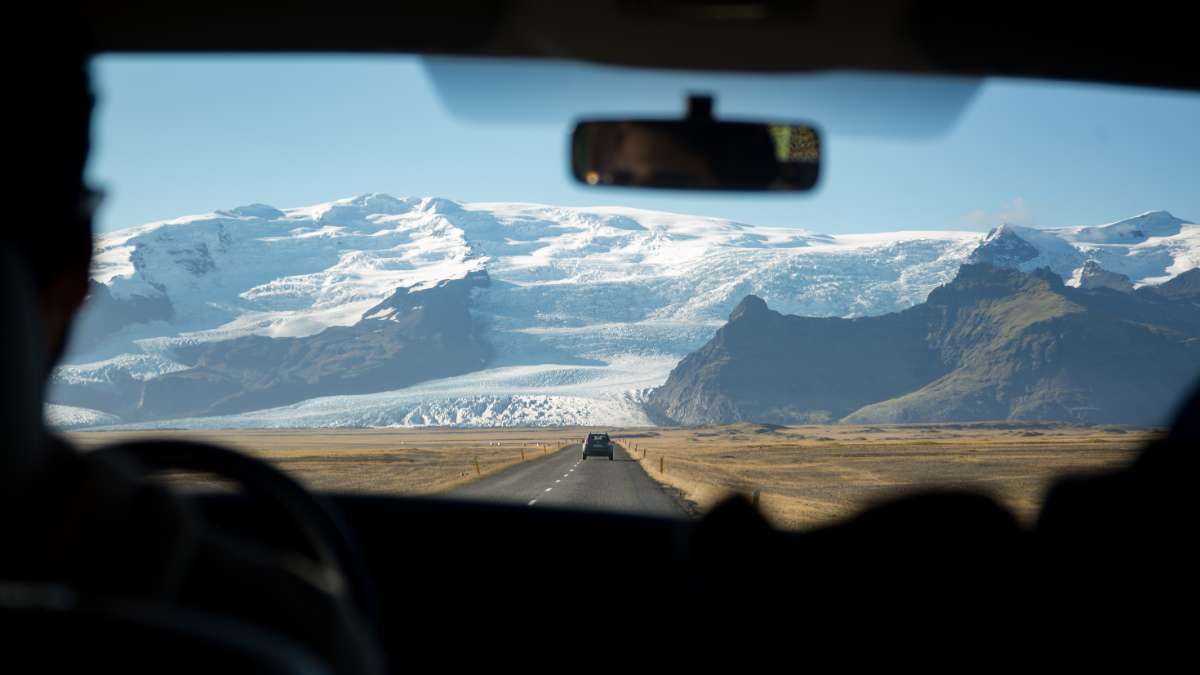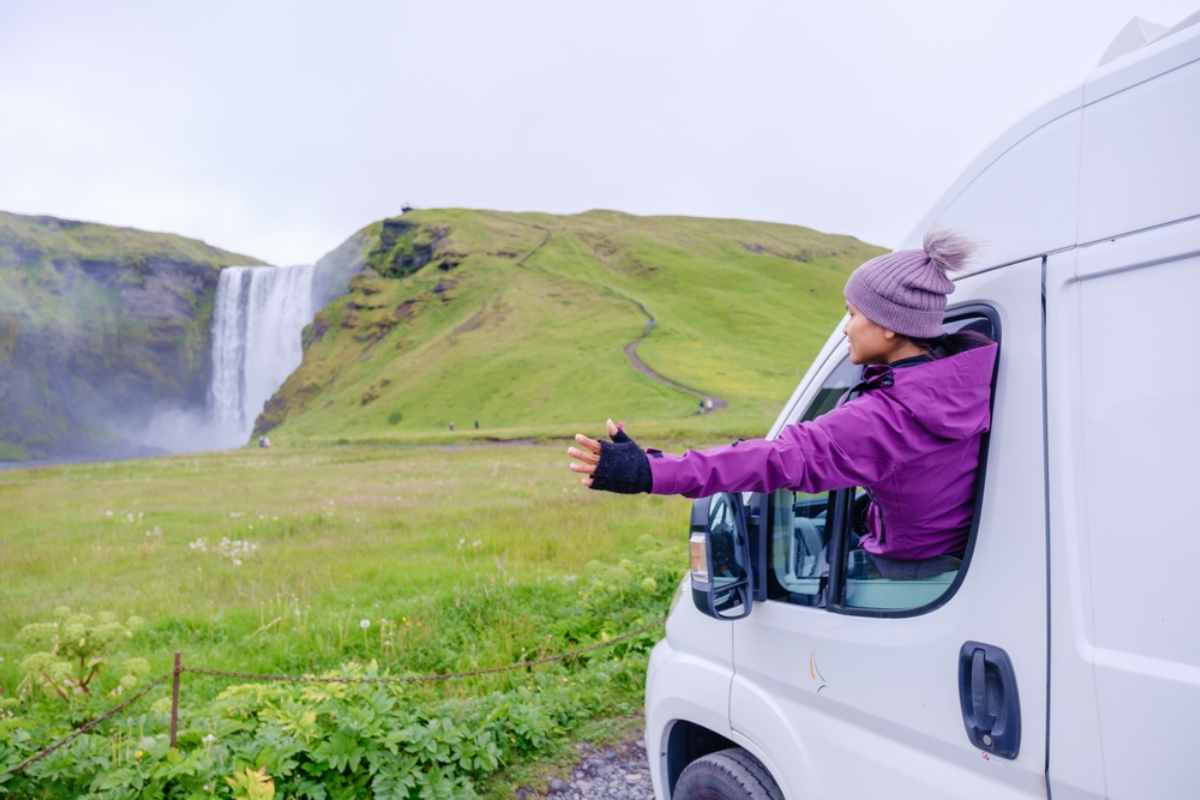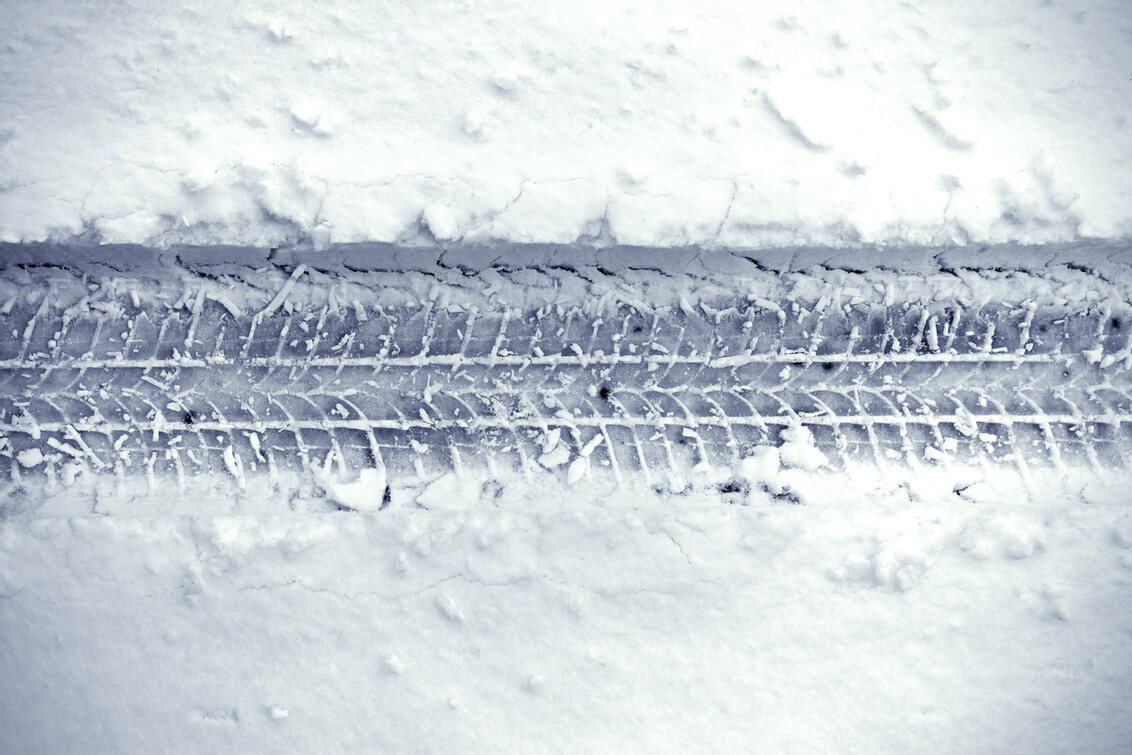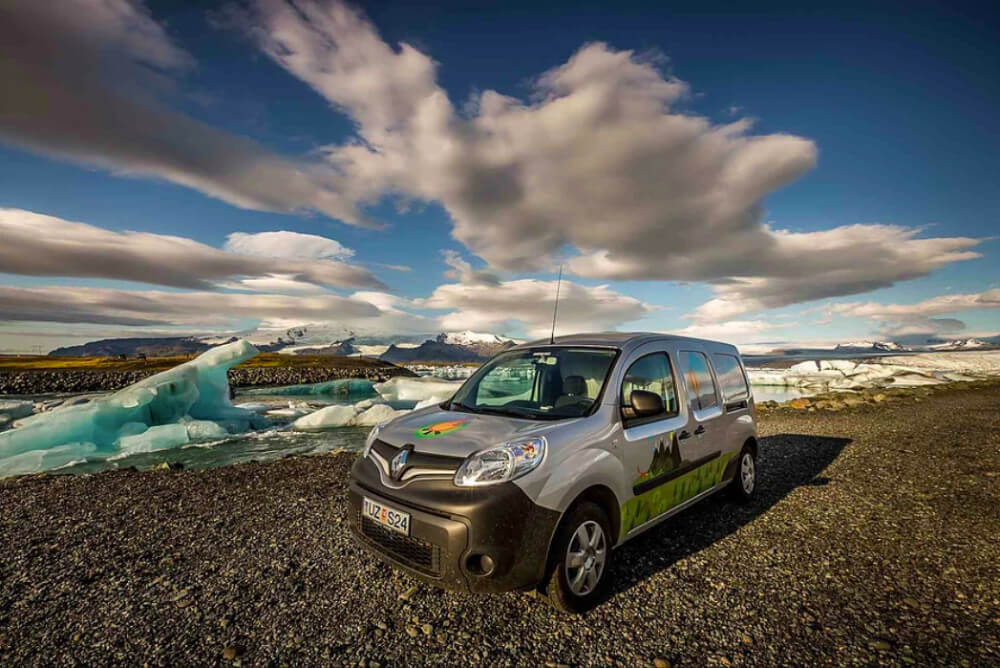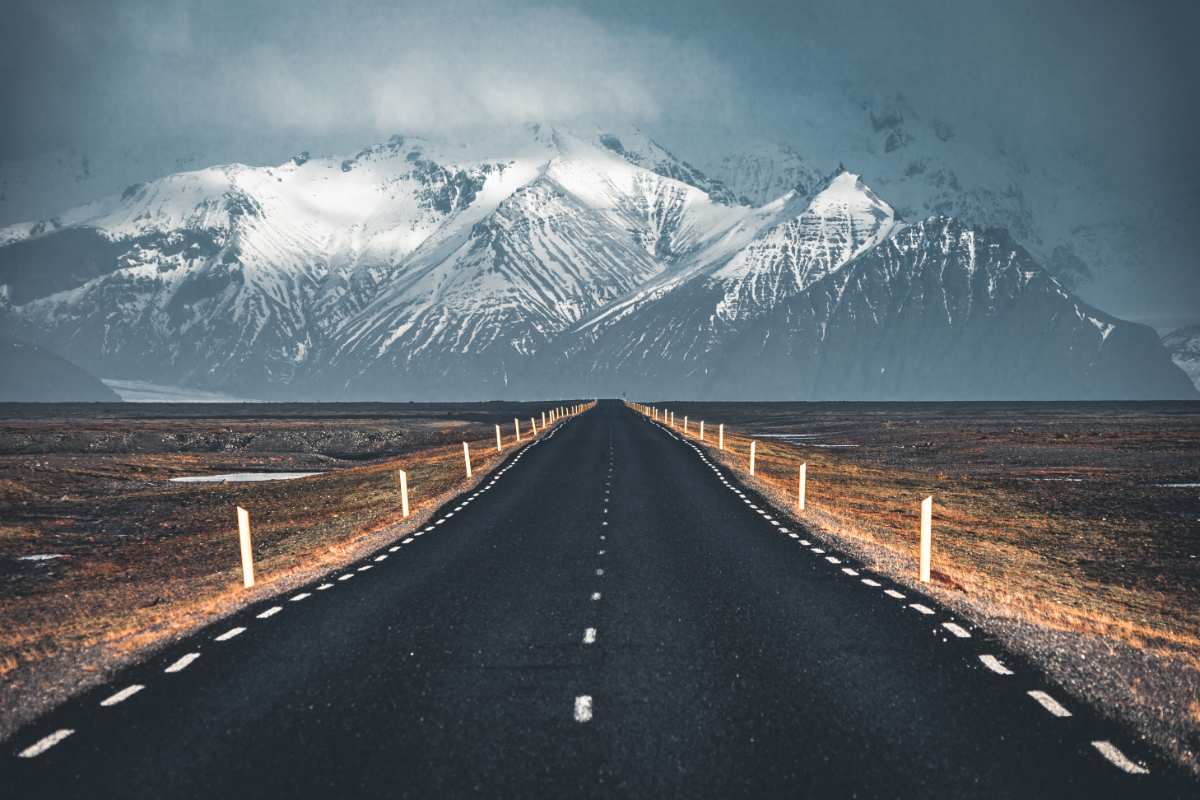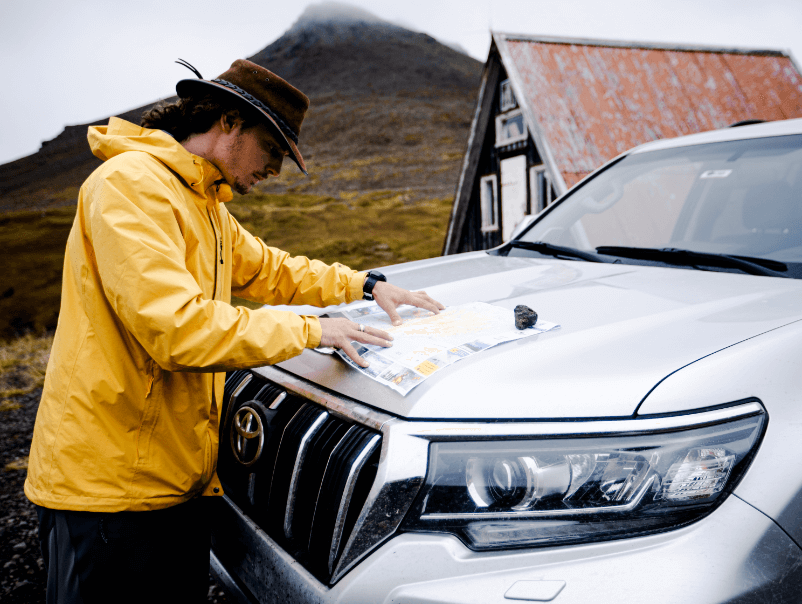Rugged landscapes and unmatched beauty are two things that Iceland is well known for, and the moment you step foot on the island, you’ll understand why. There are those who visit Iceland to relax and spend time in the hot springs, and then there are those who come to challenge nature.
If you are one of those who come looking for a thrill and adventure, this article is for you. F249 in Iceland is the road to adventure, and in this article, we take you on this epic journey and reveal why this needs to be on your Iceland bucket list.
The Infamous F249 in Iceland
Iceland has a reputation for being a land of adventure and stunningly beautiful nature. Few areas in Iceland embody these aspects as much as the F249 road in Iceland. It is nicknamed “the Road to Thorsmörk” and is one of the most challenging – if not THE most challenging – mountain roads in Iceland.
To drive the F249 in Iceland, you must be a capable driver with good experience on mountain roads. This route demands a car that is not only a 4x4 vehicle but also one with above-average ground clearance and a driver with nerves of steel. On top of that, it’s strongly recommended to travel in convoys and to have at least one spare tire, a jack, a first aid kit, and a phone with a charged battery in case you need to call for assistance.
It's worth mentioning that even though the road is challenging to drive and has claimed its fair share of undercarriages and motors, there have been few incidents of serious personal injury. The danger is reserved for cars and holiday budgets.

What to See Along the F249 in Iceland
Even though the F249 in Iceland is a difficult road to tackle, what awaits on the other side is the amazing Thorsmörk Nature Reserve. The reserve gets its name from the Thorsmörk Mountain Range, which is fittingly named after the Norse God Thor. He is seen as the protector of mankind, which is ironic given how many times people have needed assistance on the road.
Thorsmörk is situated between the massive Mýrdalsjökull Glacier and the infamous Eyjafjallajökull (try to say that 3 times fast). This is a large area with glaciers, rivers, canyons, and volcanos. Below is a collection of attractions along Road 249 and F249 in the order you will see them coming from civilization to wilderness:
Seljalandsfoss and Gljúfrabúi
As soon as you turn off the Ring Road and start driving up Road 249, you’ll come across two waterfalls with opposite features. This doesn’t mean that one waterfall goes upwards instead of down.
The Seljalandsfoss Waterfall is well known for its pathway, which allows you to walk behind it and take breathtaking pictures. Gljúfrabúi Waterfall, on the other hand, is almost completely hidden behind a cliff curtain that requires a short hike to reach. So, while one is so out in the open that you can literally walk around, the other is hidden and almost impossible to see if you don’t walk into an almost sealed “room” with rock walls.

DC-3 Airplane Wreck
As you drive further north on Road 249, you’ll reach the DC-3 plane wreck in Eyvindarholt. As the plane landed in 1969, a malfunction in one of the rudders made it veer to the right, causing it to collide with a large pile of wood. This damaged the wheels and one wing, rendering the plane non-functional.
Back then, it didn’t make economic sense to fix the plane, so it was towed away and later became a shelter for the local sheep and horses. Later, tourists started to seek it out to take pictures, so the farm animals decided to abandon it and let the two-legged visitors come and enjoy it instead.
Nauthúsagil Ravine
Right before the paved road turns into the difficult F249 road in Iceland, you’ll have the opportunity to do a short hike up the Nauthúsagil Ravine. This requires you to walk through a shallow river, which is a good warm-up for the river crossings along the F249.
The hike takes about an hour back and forth, so it won’t take up much of your traveling time.

Merkurker Ravine
The next ravine on the list is one of those things in life that gets better and better the longer you go. From the F249 in Iceland, it doesn’t look like much. But as you hike up the trail, the Merkurker Ravine reveals a stunning scenery with lush vegetation and statue-like rock formations. The trail is roughly 2.5 kilometers back and forth on a medium difficulty. That will take roughly an hour, depending on how many pictures you want to take along the way.
Stigafoss Waterfall
There are over 10,000 waterfalls in Iceland, so stopping for each one is a major endeavor. Stigafoss Waterfall is one of the waterfalls worth taking the time to visit along the F249 in Iceland. As you walk the trail and get close to the waterfall, you’ll notice a small cave behind it that you can (carefully) explore.
Unlike Seljalandsfoss, this waterfall doesn’t have any infrastructure, so you have to be incredibly careful when climbing close to the cave. If the rocks feel slippery, it’s better to admire the cave from the outside. From F249, this hike is about 1.5 kilometers back and forth, making it a quick stop compared to many others.

Gígjökull Outlet Glacier
This is one of two glacial outlets from the infamous Eyjafjallajökull Glacier and was very close to the 2010 eruptions. Here, you can still see the aftermath of one of the famous Jökulhlaups (glacial floods) that occurred when the volcano erupted underneath the glacier.
This is one of the attractions best observed from a distance if you want to get the full picture of the devastation that a Jökulhlaup can inflict on a landscape. It doesn’t take long, and you can explore the area if you want to. However, seeing it from the road is often good enough.
Stakkholtsgjá Canyon
After driving the F249 a little longer, you’ll reach the Stakkholtsgjá Canyon. If you want to get out of the car and make a 2.5-kilometer-long hike that is not challenging, this is the place to do so. The path is very even, easy to walk, and has practically no elevation difference. All in all, it’s an easy-peasy hike in a gorgeous canyon.

Valahnúkur Mountain
Last (but definitely not least) on the list of attractions that can be found along F249 in Iceland is the striking Valahnúkur Mountain. This is a 1,000-meter-high mountain located not far from the end of the road. The hiking trail from the nearby Langidalur Campsite is about an hour back and forth to the peak, but bank on a couple of extra minutes if you want to get pictures of the panoramic views from the top.
The Main Challenges of F249 in Iceland
With all of these wonderful things to see and do along the way, it’s hard to imagine the F249 in Iceland to be a dangerous road. What we have left out (as one tends to do when highlighting an amazing route) are the things that make this road difficult to travel. There are two main aspects to keep in mind:
Poor Road Conditions
The F249 is generally in good condition since it has a distinct lack of potholes and cracks, but it is still challenging. The main issue with the F249 in Iceland is that it is filled with large rocks that can damage the undercarriage of the car if you’re not careful. This is one of the reasons why you need a car with a bit of extra ground clearance and why driving at a slower pace is a good idea.
Another thing to remember is that the gravel on the side of the road is a little loose, which can cause the car to drift a little and make it harder to control. This is easily avoidable by driving close to the center of the road and stopping if you meet another car when the road feels narrow.
You can normally clear the F249 in Iceland without any incidents if you don’t drive too fast and just keep a watchful eye out for large rocks. The only tricky problem you can run into on the F249 in Iceland is when you need to share the road with a car coming from the other side.

River Crossings
The real issues on the F249 in Iceland are the river crossings. If you don’t have any experience crossing shallow rivers with a car, you should probably avoid this road and rather opt for another route on your holiday.
There are multiple river crossings along the F249 road in Iceland, and the rivers get bigger and more difficult to cross the further you go. The biggest and most problematic river to cross here is the last one: the Krossá River. It is much deeper than the other rivers along the road and is the one river many cars have needed to be rescued from.
The place to cross the Krossá River changes continuously, and when you get too deep into the river, it floods the engine with water, which ruins it. One way to avoid this is to have a snorkel for the engine, which will help keep water out of it, and another is to not go into the river at all, as even with such equipment, success isn’t guaranteed. You can call the Krossá Taxi from the Volcano Huts if you rather want to park the car and not risk the damage.
Note that some car rental companies in Iceland prohibit their vehicles from being driven on F249 due to its challenging conditions and the high risk of water damage. The one thing to keep in mind in Iceland is that almost no car insurance will cover a car that gets stuck in a river like this.
Water damage is, by default, never a part of rental car insurance, so if you drive the F249 in Iceland and the engine breaks down due to water, you will have to cover that damage yourself. This is where the holiday budget can get ruined. To put things into perspective, there are even instances of Super Jeeps getting stuck in the Krossá River.

How Long is the F249 in Iceland?
From the Ring Road to the end of the F249 in Iceland, you’ll cover just over 31 kilometers, so even though this is an eventful and challenging road to drive, it’s not very long and will take just over an hour to drive if you don’t stop and enjoy the sightings along the way.
When Can I Drive the F249 in Iceland?
Since the F249 in Iceland is a mountain road, it is only open in the summer in Iceland, usually between late June and early September. All F-roads in Iceland are closed for most months of the year and only open when the Icelandic Highlands have properly “woken up” after the winter.
You can still drive the paved part of the road and enjoy all the attractions up until the Nauthúsagil Ravine, but stay off the F249 in Iceland if it is closed. You can get really heavy fines for driving them in the off-season. Always assess current weather forecasts and river levels before attempting the journey.

Alternative to Driving Full F249 in Iceland
If you don’t feel up to the challenge of braving the F249 in Iceland by yourself, some alternatives will save you the trouble and still give you the experience.
A Private Super Jeep Tour
The most straightforward way to deal with not having to drive the F249 yourself is to simply have someone else do it for you. Thorsmörk Nature Reserve is a popular destination, and there are plenty of private Super Jeep tours that will drive the F249 in Iceland to get you there.
The Super Jeep tours will depart from most towns around the south coast, including the capital. This makes it a convenient option if you don’t want to blow the holiday budget on renting a 4x4 vehicle just to take on the F249 in Iceland for one day.
The Reliable Highland Bus
Imagine taking the bus, but instead of going to school, you’re going through rivers and into the wilderness. The Highland Bus runs between May and September, twice a day, and will take you all the way from Reykjavik to Langidalur in Thorsmörk Nature Reserve. The stops/pick-ups are:
- Reykjavik (City Hall)
- Reykjavik (Laugardalur Campsite)
- Hella (at the Kjörbúdin Supermarket)
- Hvolsvöllur (at the N1 service station)
- Thorsmörk (at the Básar Camp)
- Thorsmörk (at the Langidalur Camp)
A return ticket from Reykjavik to Thorsmörk Nature Reserve along the F249 in Iceland will set you back 25,800 ISK ($188). For both the trip to Thorsmörk and back, you will have to book a spot on the bus. You can do this online at any point before departure, so make sure to either plan well or have internet access on your travels.
The only drawback of taking the bus is that you won’t be able to stop at all the sites along the F249 in Iceland. Instead, you’ll need to try to catch them from the bus window as you pass them.

Hiking in the Thorsmörk Nature Reserve
At the end of the F249 in Iceland, you'll need to fix up your camping spot and start exploring the area. Just like in most parts of the Icelandic Highlands, hiking is the name of the game, and there is no reason not to play. Thorsmörk has the added benefit of being shielded from most of the wind and colder weather, so the valley is often a little warmer than the rest of South Iceland. Below are some of the popular hiking trails to take on after braving the F249 in Iceland:
- Thorsgata Volcano Trail: a 17-kilometer-long trail that loops around the reserve. It offers unrivaled views of the lush valley and is partly used in an annual trail-running race.
- Tindfjöll Circle: If you want a challenge, this 12-kilometer-long hike challenges you to cross rivers and face steep climbs.
- Thórsgata Hike: This 10-kilometer-long hike can be done in half a day and will offer up some pretty cool panoramic views and a trip through the Valley of the Gods.
- Fimmvörduhals Hike: If you want to commit a day or two, this 25-kilometer-long trail is a good option. It can be done in 12 hours if you’re quick, but most opt to cover it over 2 days. It is sometimes used as an extension of the Laugavegur Hike.
- Laugavegur Hike: This is without a doubt the most famous hiking trail in Iceland and a behemoth of a hike. This is 55 kilometers of raw nature that will take you up to 5 days to complete – one way. It goes between Landmannalaugar and Thorsmörk and has a 400-meter elevation difference (Thorsmörk is the lower point).

Plan Your Trip Along the F249 in Iceland
If you are one of the brave and adventurous coming to Iceland to challenge nature and feel alive, the F249 in Iceland is made for you. Braving this road is not for the faint of heart, but it is an incredibly rewarding experience. If you decide to not drive yourself, you will still remember the butterflies in your stomach as you slowly and bumpily cross the Krossá River at the end of the road.
We always enjoy driving ourselves, and just like everyone else, we also crossed a river for the first time at some point. Renting a campervan in Iceland can be your ticket to the Highlands, where you get to test your nerves and skills on the infamous F249 in Iceland. There is nothing left now but to plan your trip and start your adventure.


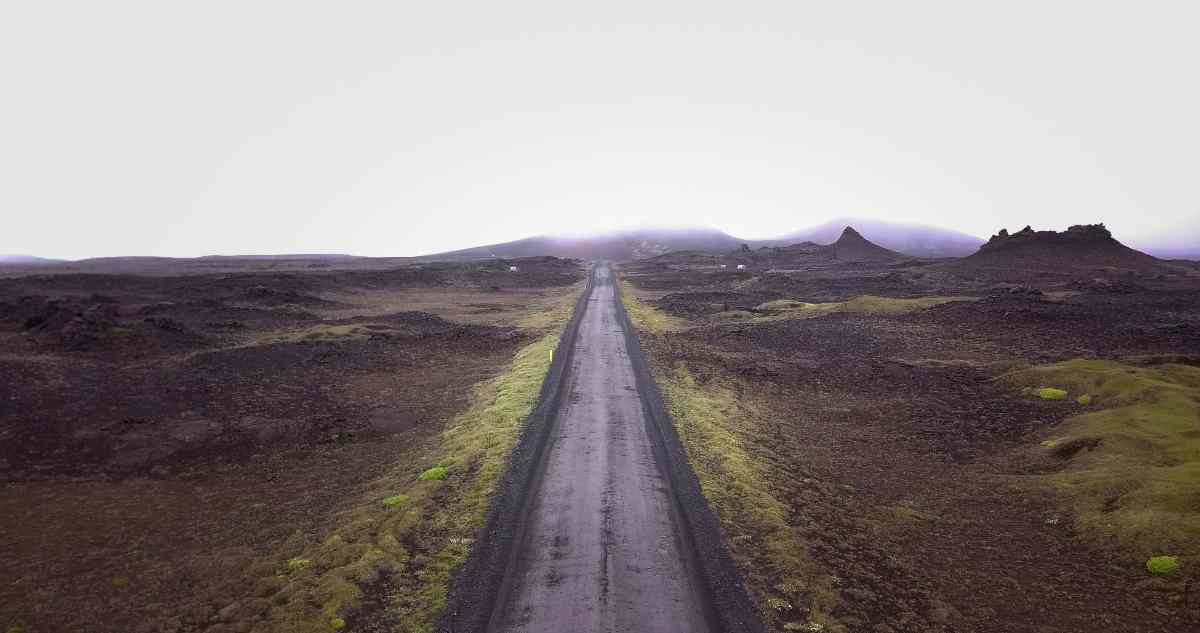
 By
By 
